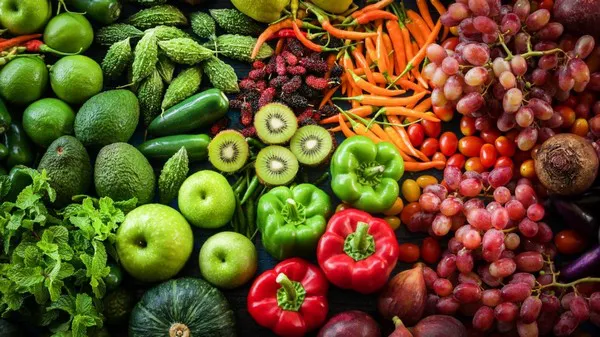Tree pollen is a ubiquitous environmental factor that plays a significant role in plant reproduction. It is produced by male trees to fertilize the female flowers, ultimately leading to the creation of seeds. Pollen itself is often microscopic, lightweight, and capable of traveling long distances through the air, making it a common allergen during certain seasons. For individuals sensitive to pollen, the duration and spread of its validity—essentially its ability to cause allergic reactions—can greatly affect their health and quality of life. Understanding how long tree pollen remains effective, or “valid,” in terms of triggering allergic responses, requires examining various environmental, biological, and temporal factors that influence its viability. In this article, we will explore tree pollen’s life cycle, its effects on allergy sufferers, and the factors that contribute to its lasting presence in the environment.
The Basics of Tree Pollen and Its Role in Nature
Tree pollen is an essential part of a tree’s reproductive process. It is produced by male flowers or cones and is intended to fertilize the female counterparts, enabling the growth of seeds. The process of pollination can occur through a variety of mechanisms, with the most common being wind-pollination (anemophily). Trees such as oak, birch, pine, and alder rely on the wind to disperse their pollen across vast areas. Other trees, like apple, cherry, and magnolia, depend on insects for pollination. Regardless of the method, tree pollen’s primary function is to facilitate reproduction, which is crucial for the survival and propagation of tree species.
In terms of its composition, tree pollen consists of proteins, lipids, and carbohydrates. These components play a role not only in the pollination process but also in the allergic reactions that many people experience. For individuals with pollen allergies, these proteins can trigger immune system responses, leading to symptoms such as sneezing, nasal congestion, itchy eyes, and even asthma attacks. Understanding the validity or “shelf life” of tree pollen in the environment is critical for individuals managing pollen allergies.
The Lifecycle of Tree Pollen: How Long Does It Last?
Tree pollen typically has a limited lifespan. However, the exact duration of its validity can vary based on several environmental and biological factors. Generally, pollen from trees is produced during specific seasons, most commonly in spring. The lifespan of tree pollen refers to the time during which it remains airborne and capable of causing allergic reactions.
Production and Dispersal
The process begins when trees produce pollen, often starting as early as late winter or early spring. Depending on the tree species, pollen production can last from a few weeks to several months. For example, birch pollen can be released in early spring, while oak pollen may continue through late spring or early summer. Wind-pollinated trees often produce large quantities of pollen in a short time, as the success of pollination depends on the random dispersion of pollen across large distances.
Airborne Viability
Once released, tree pollen becomes airborne and travels with the wind. During this period, its “validity” or ability to cause allergic reactions depends on how long it remains suspended in the air. Tree pollen can stay airborne for hours, days, or even weeks, especially when weather conditions are favorable. Wind and dry conditions tend to prolong its duration in the atmosphere, while rain and humidity can cause it to settle more quickly. Pollen is generally most abundant in the air on warm, dry, and breezy days.
Environmental Factors Impacting Pollen Duration
Pollen’s presence in the environment is highly influenced by weather patterns. In dry, windy conditions, pollen can travel long distances and remain airborne for extended periods. On the other hand, rain and high humidity tend to weigh down the pollen, causing it to fall to the ground more quickly. This is one reason why people with pollen allergies often report feeling relief after a rainstorm, as it reduces the concentration of pollen in the air.
Duration of Tree Pollen in the Air
The length of time that tree pollen remains in the air is dependent on multiple environmental variables, but it typically remains viable for a few days to a couple of weeks. During this period, individuals with pollen allergies may experience symptoms, especially on windy days when the pollen is more likely to be dispersed. In some cases, pollen may linger in the air for much longer, particularly in dry climates or during unusually long periods of wind. However, once the pollen settles, its ability to trigger an allergic reaction diminishes significantly, as the proteins within the pollen begin to break down.
The Tree Pollen Seasons and Their Impact on Allergy Sufferers
The duration of tree pollen’s validity is closely tied to the timing of its release. Different trees release pollen at different times of the year, and understanding these cycles is essential for managing pollen allergies. In temperate regions, tree pollen season typically begins in early spring and can extend through late spring or even early summer. However, the exact timing depends on the local climate and the tree species present.
Early Spring: The Beginning of Tree Pollen Season
In early spring, trees like alder, birch, hazel, and cedar begin to release pollen. These trees tend to bloom earlier in the season, taking advantage of the lack of leaves and the generally calm weather before the warmer temperatures of late spring arrive. Early spring is often marked by higher concentrations of pollen in the air, which can trigger allergic reactions in sensitive individuals.
Peak Pollen Release
During late spring, trees like oak, maple, and pine release their pollen in large amounts. These trees often produce larger, heavier pollen grains that are designed to be carried by the wind. This is when the pollen count is typically at its highest, and individuals with allergies may experience the worst symptoms. Oak pollen, in particular, is notorious for causing allergic reactions due to its high volume and long dispersal time.
Late Spring and Summer: The Decline of Tree Pollen
As the season progresses into late spring and summer, tree pollen levels tend to decline. Trees have largely completed their pollination process, and other factors, such as higher temperatures and increased humidity, contribute to the reduction in airborne pollen. However, in some regions, certain trees may continue to release pollen throughout the summer months, depending on the climate and the species. By this time, many allergy sufferers may experience relief, although it is often temporary as other allergens, such as grass and weed pollen, take over.
The Impact of Global Warming on Tree Pollen Seasons
As global temperatures continue to rise due to climate change, the timing and duration of tree pollen seasons may shift. Studies suggest that warmer temperatures and altered rainfall patterns may cause trees to release pollen earlier in the spring and extend the pollen season longer into the summer. In some areas, this could lead to longer periods of pollen exposure, exacerbating symptoms for individuals with pollen allergies.
Factors Affecting the Duration of Tree Pollen’s Impact
The “validity” of tree pollen, or the length of time it remains a viable allergen, can be influenced by several key factors, including temperature, humidity, wind, and precipitation. These environmental conditions can affect both the production and dispersal of pollen, as well as how long it remains active in the atmosphere.
Temperature
Warmer temperatures generally lead to an earlier release of pollen in the spring. When temperatures are consistently warm, trees begin to produce and release pollen earlier in the season. Similarly, prolonged periods of warmth throughout the spring can extend the period during which pollen remains in the air, leading to longer exposure for allergy sufferers.
Humidity and Precipitation
Humidity and precipitation play a critical role in determining how long tree pollen remains in the air. High humidity levels tend to cause pollen grains to absorb moisture and become heavier, causing them to settle more quickly. Rainfall can also wash pollen out of the air, reducing airborne concentrations and providing temporary relief for allergy sufferers. However, after a rainstorm, the pollen count often spikes again as the weather clears, and wind carries the pollen back into the air.
Wind
Wind is a major factor in the dispersal of tree pollen. On windy days, pollen can travel long distances and remain suspended in the air for extended periods. Areas that experience frequent winds during the pollen season may see longer durations of pollen exposure, while regions with calm winds may experience shorter pollen seasons.
Urbanization and Air Pollution
In urban environments, air pollution can contribute to the persistence of pollen in the atmosphere. Pollution particles can act as “carriers” for pollen grains, allowing them to stay suspended for longer periods. Additionally, urban heat islands, where cities experience warmer temperatures than surrounding rural areas, may lead to earlier and longer pollen seasons.
Managing Tree Pollen Allergies
For individuals with tree pollen allergies, managing exposure during peak pollen seasons is crucial. There are several strategies that can help mitigate the effects of tree pollen, including medication, lifestyle adjustments, and environmental controls.
Medications
Antihistamines, decongestants, and nasal corticosteroids are commonly used to relieve the symptoms of tree pollen allergies. These medications work by reducing inflammation, blocking histamines, and controlling nasal congestion.
Avoiding Exposure
Minimizing outdoor activities during peak pollen release times, especially on windy days, can help reduce exposure. Keeping windows closed and using air purifiers indoors can also help prevent pollen from entering the home.
Allergen Immunotherapy
For individuals with severe pollen allergies, allergen immunotherapy (allergy shots) may be an effective long-term solution. This treatment involves gradually exposing the individual to increasing amounts of pollen to desensitize the immune system.
Conclusion
The validity of tree pollen, in terms of its ability to trigger allergic reactions, is influenced by a complex interaction of environmental and biological factors. Pollen from trees typically remains in the air for several days to weeks, with its peak season occurring during the spring. Factors such as temperature, humidity, wind, and precipitation all contribute to the duration of pollen exposure. As global warming continues to impact climate patterns, the pollen season may become longer and more intense, posing additional challenges for individuals with allergies. Understanding the lifecycle of tree pollen and its environmental impact is essential for managing allergic reactions and improving quality of life for allergy sufferers.
Related Topics

































